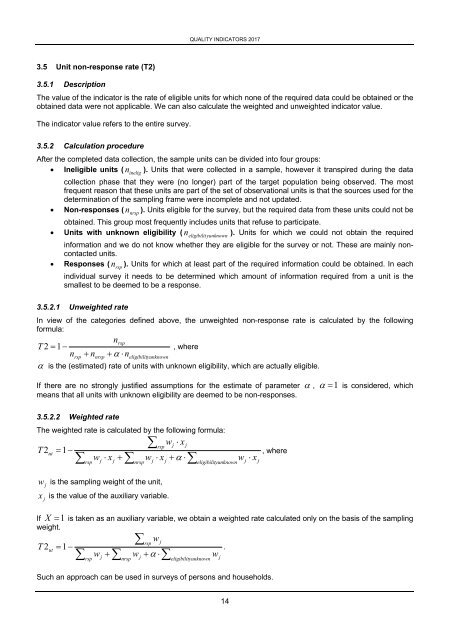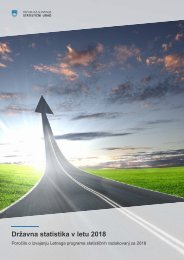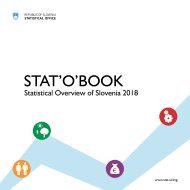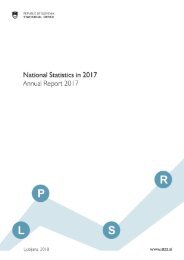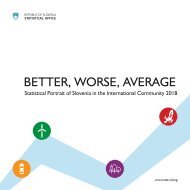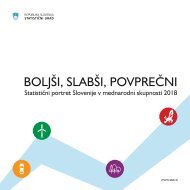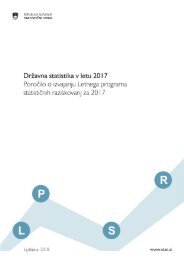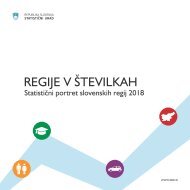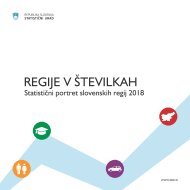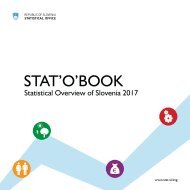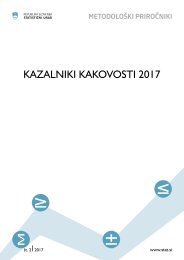quality-indicators-2017
You also want an ePaper? Increase the reach of your titles
YUMPU automatically turns print PDFs into web optimized ePapers that Google loves.
QUALITY INDICATORS <strong>2017</strong><br />
3.5 Unit non-response rate (T2)<br />
3.5.1 Description<br />
The value of the indicator is the rate of eligible units for which none of the required data could be obtained or the<br />
obtained data were not applicable. We can also calculate the weighted and unweighted indicator value.<br />
The indicator value refers to the entire survey.<br />
3.5.2 Calculation procedure<br />
After the completed data collection, the sample units can be divided into four groups:<br />
Ineligible units ( n<br />
inelig<br />
). Units that were collected in a sample, however it transpired during the data<br />
collection phase that they were (no longer) part of the target population being observed. The most<br />
frequent reason that these units are part of the set of observational units is that the sources used for the<br />
determination of the sampling frame were incomplete and not updated.<br />
Non-responses ( n<br />
nrsp<br />
). Units eligible for the survey, but the required data from these units could not be<br />
obtained. This group most frequently includes units that refuse to participate.<br />
Units with unknown eligibility ( n<br />
eligibilityunknown<br />
). Units for which we could not obtain the required<br />
information and we do not know whether they are eligible for the survey or not. These are mainly noncontacted<br />
units.<br />
Responses ( n<br />
rsp<br />
). Units for which at least part of the required information could be obtained. In each<br />
individual survey it needs to be determined which amount of information required from a unit is the<br />
smallest to be deemed to be a response.<br />
3.5.2.1 Unweighted rate<br />
In view of the categories defined above, the unweighted non-response rate is calculated by the following<br />
formula:<br />
nrsp<br />
T 2 1<br />
, where<br />
nrsp<br />
nnrsp<br />
neligibilityunknown<br />
is the (estimated) rate of units with unknown eligibility, which are actually eligible.<br />
If there are no strongly justified assumptions for the estimate of parameter , 1<br />
means that all units with unknown eligibility are deemed to be non-responses.<br />
is considered, which<br />
3.5.2.2 Weighted rate<br />
The weighted rate is calculated by the following formula:<br />
T<br />
<br />
w x<br />
rsp j j<br />
2<br />
ut<br />
1<br />
, where<br />
w <br />
<br />
rsp j<br />
x<br />
j<br />
w<br />
nrsp j<br />
x<br />
j<br />
<br />
w<br />
eligibilityunknown<br />
j<br />
x<br />
j<br />
w<br />
j<br />
is the sampling weight of the unit,<br />
x<br />
j<br />
is the value of the auxiliary variable.<br />
If X 1<br />
is taken as an auxiliary variable, we obtain a weighted rate calculated only on the basis of the sampling<br />
weight.<br />
w<br />
rsp j<br />
T 2<br />
ut<br />
1<br />
.<br />
w w <br />
w<br />
<br />
rsp<br />
j<br />
<br />
nrsp<br />
j<br />
<br />
eligibilityunknown<br />
Such an approach can be used in surveys of persons and households.<br />
j<br />
14


